The History of the Patek Philippe Aquanaut – Part 1
A 2-part series that tells you all about Patek Philippe's sports watch
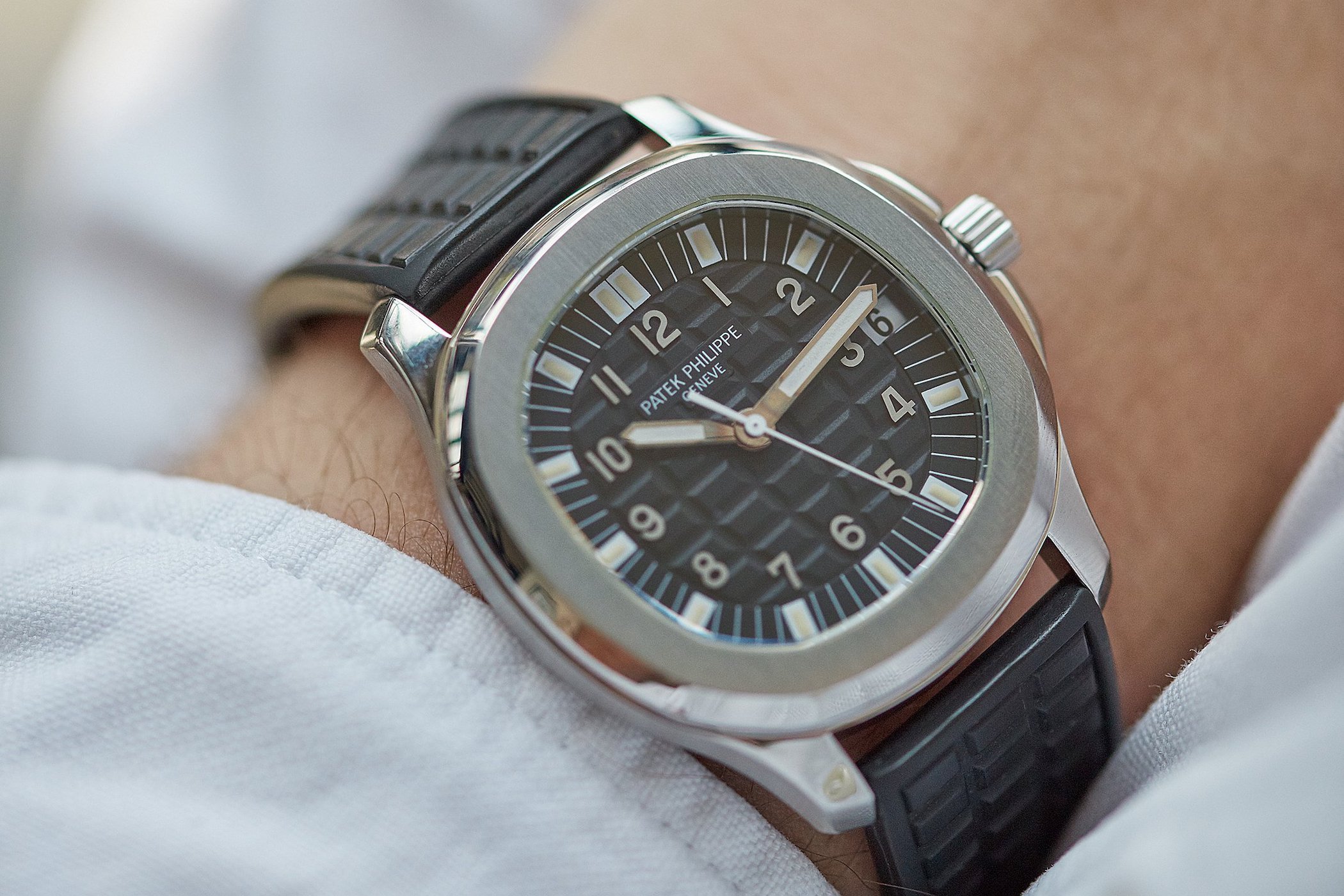
It’s taken some time, but the Patek Philippe Aquanaut has become sought after by watch collectors – especially in steel (no surprises there). That will probably sound strange if you’re relatively new to the world of high-end watches and are accustomed to seeing Aquanauts advertised at double retail. After all, based on the way the market is behaving now, it’s hard to imagine these watches weren’t always in red hot demand. The reality is a little different, however. In fact, the story of the Aquanaut by Patek Philippe is an interesting one. That’s why we’ve put together this in-depth, two-part series on the history of the Aquanaut.
In Part 1, we’ll be talking about the origins of this collection, the environment in which it was conceived and launched, and how the design was influenced by the Nautilus. We’ll also take a closer look at some of the key early models. There’s a lot to cover but we hope you’ll stick with us. In true MONOCHROME fashion, we’ve done our best to be as thorough and as accurate as possible. We are only human though, so if we’ve missed something or if you have further information to add to the story, please don’t hesitate to let us know in the comments below.
The Dot-Com Boom
Depending on how old you are, you might remember a little thing called the dot-com boom (later referred to as the dot-com bubble). Wikipedia describes it as “a historic period of excessive speculation mainly in the United States that occurred roughly from 1994 to 2000, a period of massive growth in the use, and adoption of the Internet.” During this frenetic period, new millionaires were being minted just about every other day. On paper at least. Debt was cheap and easy to come by, especially if your “technology” company had .com in its name, and massively over-subscribed IPOs were a regular occurrence. So much so that between 1995 and 2000, the Nasdaq Composite stock market index rose 400%. Such was the promise of easy money that people quit their jobs in droves to become day traders.
Young people in particular, who were quick to embrace the possibilities of this new technology called the internet, suddenly found themselves flush with disposable income. And, they were keen to spend it. Big houses, fast cars, lavish holidays, and of course, luxury watches. Not surprisingly, many brands developed and launched new products during this period. They were designed to appeal to a younger audience that had a decidedly more casual approach to luxury.
Against this backdrop, a new steel luxury sports watch from a prestigious watch manufacturer made its debut. Which, if it was just about any other brand, wouldn’t have been that big a deal. But it wasn’t just any other brand: it was Patek Philippe. And this was the first new luxury steel sports watch collection to issue forth from the Geneva manufacture in two decades. And we all remember what happened the first time.
The Nautilus Junior
Even if you’ve been living under a rock for the last few years you would know that the Patek Philippe Nautilus Ref. 5711 has become one of the most in-demand steel watches on the planet. Our Editor-In-Chief, Frank Geelen, wrote an excellent opinion piece on the topic last year that I recommend reading if you haven’t already. There are a number of reasons for this explosion in popularity, most of which are not grounded in any sense of logic or reason. But this is a world fuelled by emotion and passion, so no real surprises there. The fact remains though that the launch of the Nautilus in 1976 is seen as a key milestone in the long and storied history of Patek Philippe.
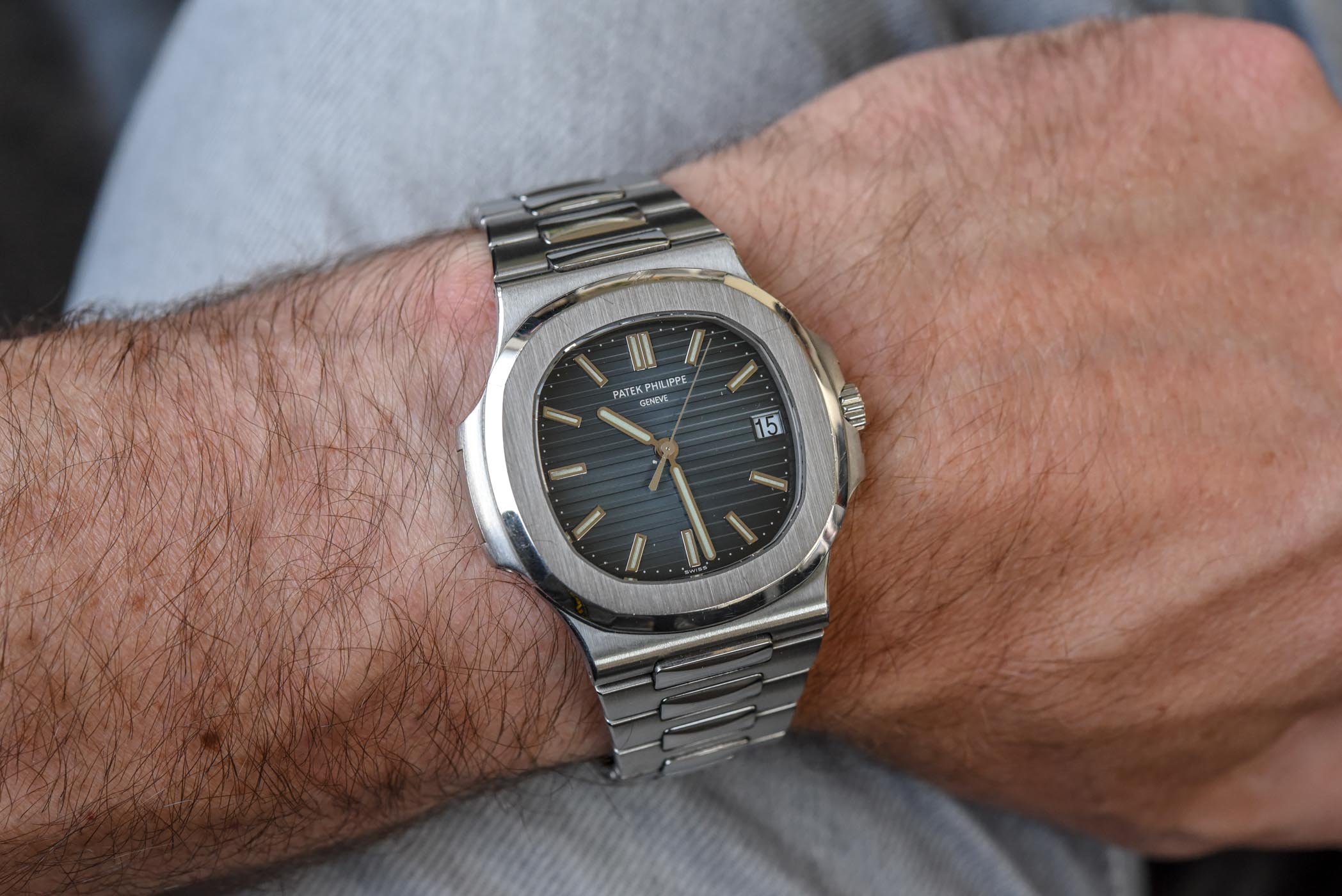
Yet, in spite of that, two decades would pass before the company would introduce another luxury steel sports watch collection. For those who know Patek Philippe well, this is not surprising. After all, the company specialises in fine watchmaking. Its enviable reputation is built on complicated mechanical pieces with a traditional aesthetic and cases crafted from precious metals. Yet, even it is not immune to market shifts and consumer trends, although it may appear to ignore them most of the time (hence the reason annual production volumes of the Nautilus remain steady in the face of extraordinary demand).
Still, it’s fair to say that the Nautilus, while a very strong seller for the brand, was no longer the disruptive force it had once been. Edgy and a little rebellious in the 1970s, twenty years on it was now well-established and coveted by seasoned collectors. Nothing wrong with that of course, but Patek needed something fresh to attract this new generation of watch lovers. A watch that embraced the notion of ‘casual luxury’ that was so en vogue at the time, but which still carried the unmistakable hallmarks of a luxury sports watch from the brand.

The solution? The Aquanaut. Heavily inspired by the design of the Nautilus but with some key differences, Patek Philippe made no secret that it had specifically created this watch for a new and younger sporty clientele. And it certainly seemed to play well with that audience. Collectors were harder to convince though. Some praised the modern style and technical execution of the Patek Philippe Aquanaut. But many saw it as a sort of Nautilus Junior, and not just because of its smaller stature. It was a good watch, but not as good as the original: it wasn’t designed by the legendary Gérald Genta; the case construction wasn’t as complex; and it didn’t have an integrated bracelet.

Given that Patek Philippe was trying to reach a new audience with the Aquanaut, it was probably considered a good thing that its existing clients were a bit wary. After all, if you just keep making things to keep your current customers happy, there’s a good chance you’re not going to attract the attention of new ones. That’s probably enough on the background of this collection though. Let’s take a closer look at the inaugural model and the important variations that would follow.
Patek Philippe Aquanaut Ref. 5060 A
This is the reference that started it all, the Patek Philippe Ref. 5060A. At 35.6mm, it was smaller than the current Nautilus at the time – the so-called ‘mid-size’ Ref. 3800/1A, which measured 37.5mm. The similarities between the two designs are immediately obvious though. The most notable one being the port hole-inspired eight-sided bezel initially conceived by legendary watch designer Gérald Genta. Likewise, the satin-brushed case is straight out of the Nautilus playbook but with a more contemporary feel. A solid, screw-down caseback and screw-down crown ensured a water-resistance rating of 120m.

The distinctive dial, however, was unique to the Aquanaut collection. Offered exclusively in black on the Ref. 5060A, it featured a central raised guilloché motif. Some have compared its appearance to a block of Swiss chocolate. Modern Arabic numerals in white gold were used for the hour markers. The hour and minute hands, also in white gold, featured a luminous coating for easy reading in low light, as did the minute markers on the peripheral chapter ring. These days we are more than accustomed to this striking aesthetic but back then, its unusual design really stood out.
The other defining feature of the Aquanaut was its rubber strap. A first for Patek Philippe and a rather bold move for the brand at the time. In development for more than a year, it was comprised of more than 20 materials. Impervious to saltwater, UV deterioration and bacteria, it was even tested by the US Food and Drug Administration. Given its suitability for water sports and just general frolicking on the beach, Patek Philippe christened its new strap “Tropical”.
Of course, one of the key characteristics of the Nautilus was (and still is) its integrated bracelet, which seems to flow seamlessly from the case. This wasn’t possible with the rubber strap on the Aquanaut at the time (although the design has been improved over the years). So instead, the texture on the strap mirrors the pattern on the dial to create a sense of continuity. A subtle design element that still permeates the collection today. Closing the strap was a steel folding clasp, embossed with the brand’s Calatrava cross emblem.
Inside was the self-winding Calibre 330 SC, a manufacture movement with sweep seconds hand and date indicator. Measuring just 3.5mm thick, it was equipped with Patek Philippe’s patented Gyromax balance wheel and oscillated at 21,600 vph. A 21k gold unidirectional rotor was responsible for charging up the spring, which stored enough power for 48 hours of use. Although not visible beneath the solid caseback, the movement was still expertly finished, as attested to by the Geneva Seal (the Patek Philippe Seal wasn’t introduced until 2009).
Limited Edition?
It is commonly stated that the initial Aquanaut was produced in a limited run of 1,000 pieces in both steel (the above described Ref. 5060A) and yellow gold (Ref. 5060J). However, in my research, I could not find any concrete evidence to support this. When I spoke with Patek Philippe, they indicated that there was no official communication concerning limited or special editions at that time. The official press release for the Ref. 5060A does say, however, that “availability of the Aquanaut will be restricted by the limited supply of Patek Philippe’s self-winding movements.” So, it’s possible that the production of the initial Ref. 5060A maxed out at around 1,000 pieces, but it wasn’t a limited edition as such.
The Case of the 5060J Yellow Gold
Besides the reference 5060A, there’s another watch that often appears as an early model, the yellow gold Patek Philippe reference 5060J, a watch that could actually be the predecessor of the Aquanaut collection, but not named Aquanaut.

With the Ref. 5060J, things are not clear. There’s no doubt this watch exists, but it doesn’t appear on the official Aquanaut timeline from Patek, nor is there a separate press release for it (and no mention in the first Aquanaut press release). For a good reason, it is indeed mentioned in the Nautilus timeline, with a date of introduction in 1996, making it a predecessor to the steel Aquanaut 5060A – something we already discussed here, in the Part. 2 of our History of the Patek Philippe Nautilus.

It does bear a striking resemblance to the Patek Philippe Nautilus Ref 3800/1JA with Roman numeral dial from 1996 but is mentioned as the reference 5060S. It seems that in many ways this watch, reference 5060S, was the precursor to the Aquanaut and at some point, Patek transitioned it into that collection and changed the reference to 5060J – the reference 5060S isn’t mentioned in the Patek Philippe Authorized Biography by Nick Foulkes, but the 5060J is, with an introduction date in 1996… This 5060S, later 5060J, could well have been sort of a test from Patek to have a Nautilus on leather strap, which led the brand to introduce a new collection of sports watches based on this model, later to be named Aquanaut – this reinforces again the links between the two collections.
Two versions of the 5060J appear to have been made, the more common being the one with the black lacquer dial (no central raised guilloché motif), luminous Roman numeral hour markers and gold leaf-shaped hands.
There’s also a version with a silver/white dial but I’ve found even less information on this one. These models were typically worn on a black leather strap, not rubber. Again, there is no official communication from Patek Philippe that these were limited edition models. Production is thought to have ceased in 2002, so presumably, there’s not too many of them floating around.
Patek Philippe Aquanaut Ref. 5064 A-001
Following the success of the Ref. 5060A, Patek Philippe released the Ref. 5064 A-001 the next year. Visually almost identical to the Ref. 5060A, it was offered in a smaller 34mm case powered by the quartz Calibre E 23 SC. There were also some subtle updates to the dial, including the size and position of the date window and hour numerals.

Presumably, this was targeted at female buyers, although again there’s not a great deal of information available about the watch or its launch. The Ref. 4960 A-010 was also launched in the same year, and that was housed in an even smaller 29.5mm steel case. It was also powered by a quartz movement, the Calibre E 19 S C.
Patek Philippe Aquanaut Ref. 5065
The Ref. 5060 may have been the one that started it all, but arguably it’s the Ref. 5065 A that many watch lovers think of when it comes to first-generation Aquanauts. Introduced in 1998, aesthetically it followed the same design cues as the original but with a few key differences.

For a start, it was offered in a ‘jumbo’ brushed steel case, measuring a more contemporary 38mm. This fit better with the luxury steel sports watch aesthetic and made the gap in size between the Aquanaut and the Nautilus considerably smaller. It also featured a sapphire caseback, so you could see the nicely finished and newly upgraded Calibre 315 SC inside.
The Ref. 5065/1A-010 variation introduced a stainless steel, highly-polished Aquanaut bracelet. This was a bit at odds with the luxury sports watch aesthetic – it was very shiny, unlike the brushed steel bracelet on the Nautilus. The watch came with a pre-cut rubber strap too though, so you could switch between the two. A year later, Patek introduced a full yellow gold version in the Ref. 5065 /1J-001.

Patek Philippe Aquanaut Ref. 5066
In many ways, the Ref. 5066 can be thought of as the second generation of the original Ref. 5060. It kept the same 35.6mm case and the same self-winding Calibre 330 SC but introduced a sapphire caseback. It was also made available in a yellow gold case with rubber strap in the Ref. 5066 J-001.

If you’ve stuck with me this far, then hopefully you now know a lot more about the early editions of the Patek Philippe Aquanaut than you did when you started reading. And if you know something that I don’t (or failed to include), please add it in the comments below. In Part 2, we’ll take a look at how and why Patek Philippe completely updated the Aquanaut collection in 2007. As well as profile the key models in the current collection.
The mandatory reminder, a timeline of most Aquanaut watches from 1997 to 2017 – published by Patek Philippe for the 20th anniversary of the Aquanaut.
Credits for images: Patek Philippe, lunaroyster.com, govbergwatches.com, acollectedman.com, bulangandsons.com, sothebys.com, antiquorum-swiss.com, watchclub.com
Edited 15/11/2019 – details about the reference 5060J


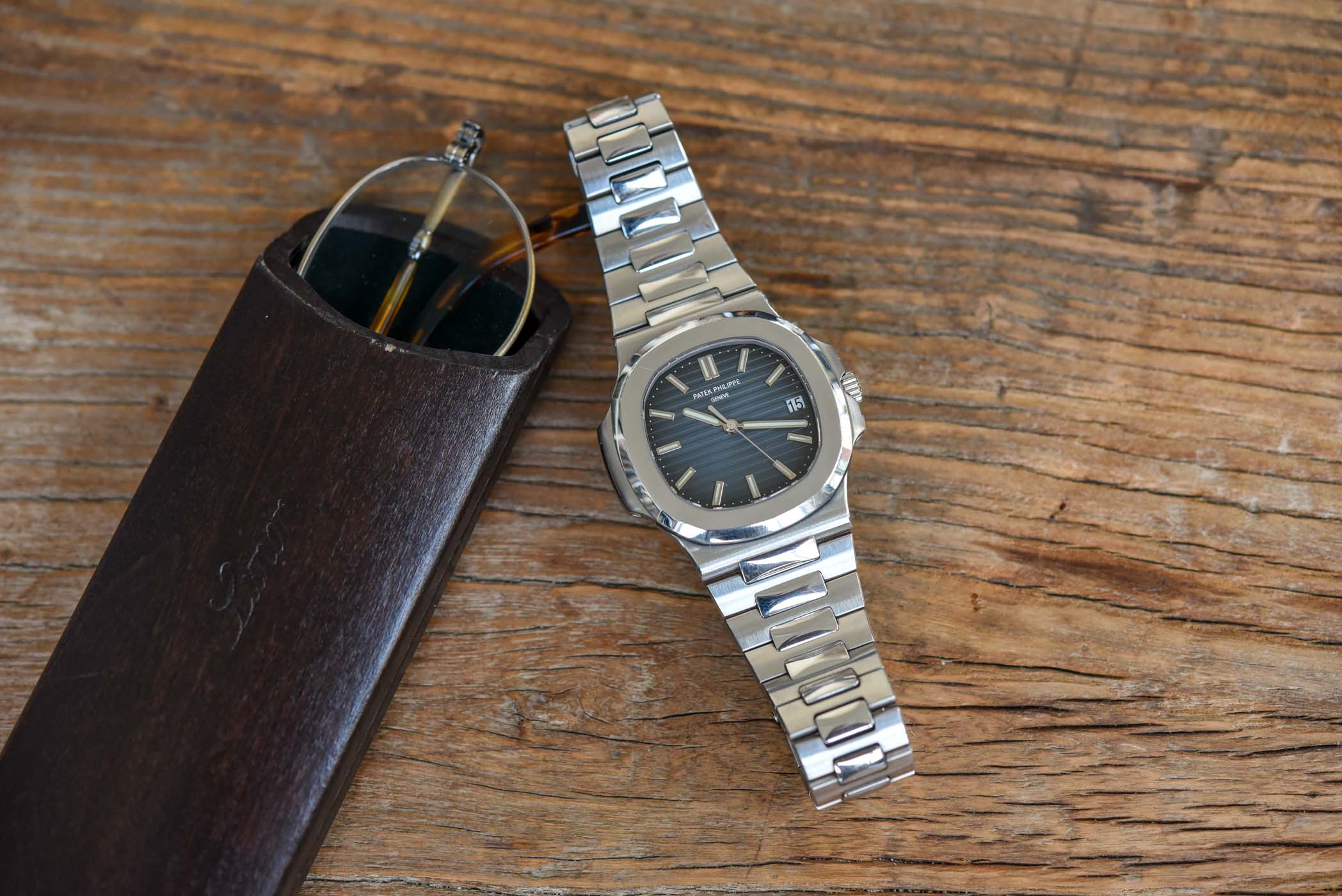
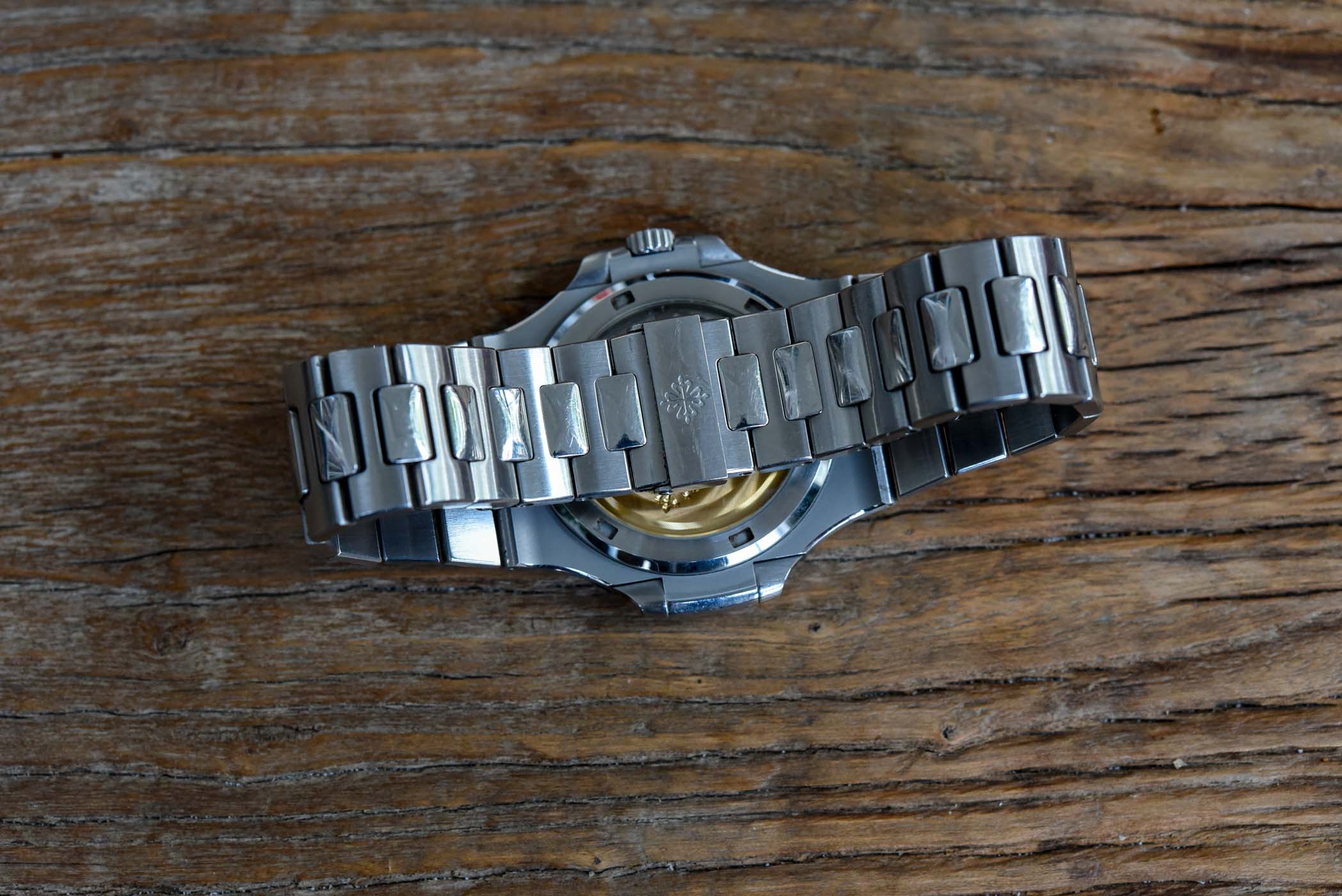
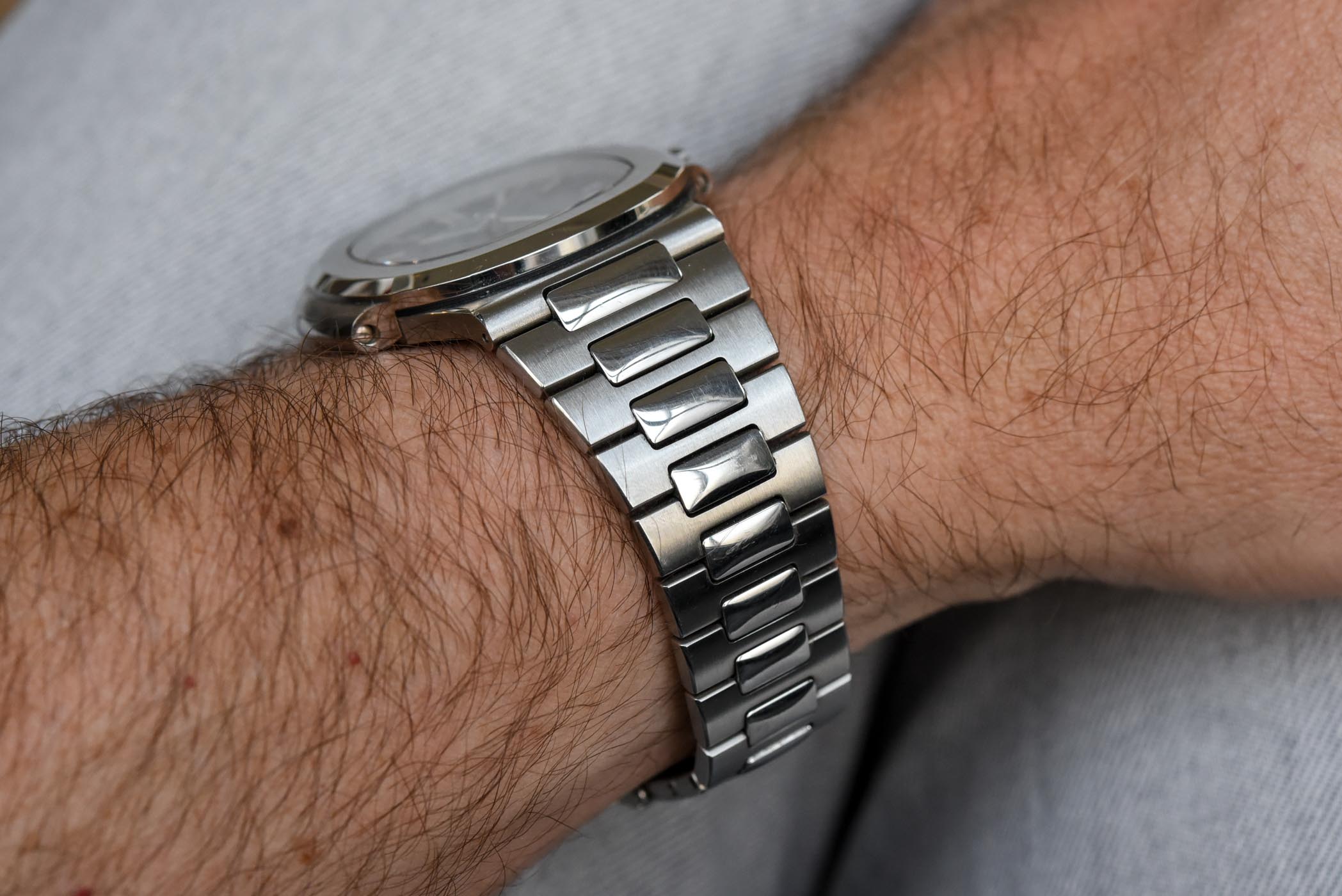














4 responses
Your information about the 5060J is totally incorrect. The 5060J was launched by Patek in 1997 as a Nautilus model. I have a 1997 Patek catalogue which lists this model as a Nautilus. Also issue No 39 of International Wrist Watch (English) has a 2 page feature on this watch. This is also the reason the dial has Roman numbers exactly the same as the then current steel Nautilus model 3800. The Aquanaut range was not launched until 1998 one year later and in that year the model 5060J was moved into the Aquanaut range in the 1998 Patek catalogue. I am also of the opinion that all 5060J models with a solid gold backs manufactured in 1997 are Nautilus’s and the Aquanaut 5060J’s all have see through case backs as did most of the steel 5060 Aquanauts. Again I believe that the initial run of steel 5060 Aquanauts all had solid steel case backs. All of this adds to the speculation that there was some sort of limited edition 5060 Aquanaut when in fact all that happened was that Patek’s initial production run of the 5060 was with a solid back which was quickly changed to the more fashionable see through back. I have sent my own 1997 5060J for service to Patek UK and they also incorrectly called it an Aquanaut when it is most definitely a Nautilus so it is not surprising that this model causes so much confusion.
Hi Roy,
Thanks for your comment and interesting insights. I believe you are referring to the Nautilus Ref 5060/S which was launched in 1996 alongside the Ref 3800/1 with Roman numeral dial? I believe this model is seen as somewhat of a precursor to the Aquanaut range and was the first – and only – Nautilus to feature lugs and a leather strap. It does seem indeed that it transitioned out of the Nautilus range and into the Aquanaut collection at some point, however, there is no official timeline from Patek Philippe on this. Hence the reason I put so many qualifications in the section about the Ref 5060J – I simply could not find agreed-upon facts to include. You are right in flagging the relevance of this model in the development of the Aquanaut collection though, so I have added something about it in the text above.
That said, I think there would be some disagreement with your assertion that the Aquanaut was launched in 1998. I personally used the official Patek Philippe press release dated July 1997 to pull together information on the Ref 5060A. (It made no mention of the Ref 5060J by the way).
Cheers,
Tom
Hi there,
First of all I would like to thank you for a great overview of the Aquanaut line. Great job!
It is only one reference that seems to be missing from the time line.
I believe ref 5165 A-001 might have been omitted (the illustrative time line).
I observe that 5065 is introduced in 1998 for the first time and then another 5065 is introduced 2007(?). Correct me if I’m wrong, but I think It would be highly unlikely that Patek would reissue the same model, same movement in the same dimensions 9-10 years later.
I belive the 5065 reference in 2007 should be a 5165 A-001 instead – A model that commemorates the 10 year anniversary of the Aquanaut line.
Although after reading your reply above I must say that I’m not quite sure if the 5165 A-001 was introduced in 2007 or 2008. I was quite sure it was 2008 but I would imagine that it could be 2007 if you’ve confirmed with Patek that the official Aquanaut line was introduced in 1997 and not 1998. Many belive 1998 to be the genesis year of the Aquanaut, but I cant seem to find any evidence that would support the counterfactual claim.
It would be much appreciated if you are able to clarify this.
Please do correct me if I have misunderstood you in any way, shape, or form.
Best regards,
Sakityan N.
Can someone explain when they changed to the non-serif font on the date wheel?